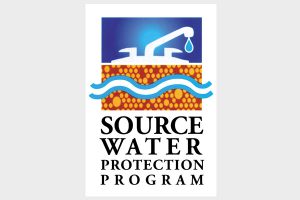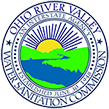
Required by the Safe Drinking Water Act Amendments to protect public drinking water supplies, the Source Water Assessment Program requires states to: delineate source water protection areas for public water systems; identify the origins of regulated and certain unregulated contaminants in the delineated area; determine the susceptibility of public water supplies to contamination by sources inventoried. States are also required to describe how they will attempt to coordinate assessments of interstate waterways with other states, tribes and nations, known as the “maximum practical effort.”
In 1997, ORSANCO initiated the Source Water Assessment Workgroup to discuss interstate aspects of source water protection activities for the Ohio River. The workgroup is comprised of representatives of state and federal drinking water agencies, including: Indiana Department of Environmental Management; Illinois Environmental Protection Agency; Kentucky Department of Water; Ohio Environmental Protection Agency; Pennsylvania Department of Environmental Protection; West Virginia Bureau of Public Health; U.S. EPA Regions 3, 4, & 5; and ORSANCO’s Water Users Advisory Committee. As a result of workgroup meetings, ORSANCO developed an approach for states to delineate and inventory the 34 Ohio River surface water intakes. This approach was incorporated into a report that could be appended to individual state source water protection program activities for the Ohio River.
Due to the size of the Ohio River, ORSANCO developed a tiered delineation system consisting of three protection zones. The purpose of this tiered approach is to define the level of source inventory within the Ohio River Basin.
| Zone I | Zone II | Zone III |
| Zone of Critical Concern | Zone of High Concern | Source Water Area |
|
Extends 1/4 mile below a water intake to 25 miles upstream in the Ohio River. The lateral extent includes 1/4 mile on both sides of the river bank and major tributaries.
|
Extends 1/4 mile below the surface of a water intake upstream, to 1/4 mile below the next Ohio River intake. The lateral extent includes all 14-digit hydrologic units adjacent to the banks of the Ohio River and major tributaries.
|
The entire portion of the Ohio River Basin upstream from a surface water intake.
|
|
All potential contaminant sources to a surface water should be identified and inventoried. Potential sources can be found using existing national, international, and state databases and through field verification.
|
Inventories should focus on existing databases and “localized” in-state resources to identify sources of contamination. Due to the size of this zone, a field component to identify sources of potential contamination is impractical.
|
Only critical areas of major activity need to be located. At a minimum, sources contained in US EPA’s Envirofacts Warehouse webpage should be identified.
|
Ohio River states are responsible for performing potential contaminant source inventories for drinking water intakes within their respective boundaries. ORSANCO then coordinates an information exchange between neighboring states so that the interstate aspects of source water protection activities can be addressed. To facilitate a data transfer between states, a minimum requirements for available information on point sources of contamination was established. State agencies may choose to provide additional data beyond the minimum requirements.
Required Information for Point Sources
- Facility Name
- Facility Address
- Facility Contact/Telephone Number
- Facility ID Number
- Facility NPDES Permit Number
- Latitude/Longitude
- Chemical(s) Released
- Quantity Information
- Standard Industrial Classification (SIC)
For more information on the Source Water Protection Program, please contact Sam Dinkins.

